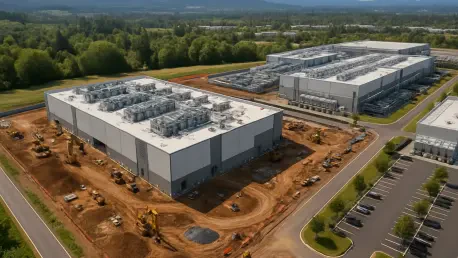In an era where digital infrastructure is the backbone of technological advancement, the demand for robust data center facilities has never been higher, especially in regions poised for explosive growth in tech and artificial intelligence applications. A prominent player in this space has made a significant move by announcing the development of a new facility in Hillsboro, Oregon, further cementing its commitment to meeting the escalating needs of enterprise and cloud-based workloads. This strategic expansion not only addresses the pressing capacity demands but also highlights the importance of location in the data center industry. Hillsboro, with its unique blend of infrastructure advantages, emerges as a critical hub for such developments, offering a glimpse into how companies are positioning themselves for the future of technology.
Strategic Growth in Key Markets
Unveiling the Hillsboro Expansion
A major step forward in data center infrastructure comes with the acquisition of a new parcel in Hillsboro, Oregon, where a two-story, 350,000-square-foot facility with 27 megawatts of power capacity is set to rise. Named Hillsboro 6, this addition will boost the company’s total presence in the area to an impressive 1.5 million square feet across six facilities. Currently, the Hillsboro campus operates four data centers totaling over 824,000 square feet with 77.3 megawatts of power, while another facility, Hillsboro 5, is under construction and slated for completion next year with an additional 358,000 square feet. Hillsboro 6, positioned near the existing Hillsboro 1, will provide a comprehensive suite of services including colocation, interconnection, and cloud solutions tailored for demanding workloads. This expansion reflects a deliberate focus on scaling capacity to support the burgeoning requirements of modern tech ecosystems.
Beyond Oregon: Nationwide Developments
The growth trajectory extends well beyond the Pacific Northwest, with ambitious projects underway in other strategic locations across the United States. In Parker, Colorado, a 22.5-megawatt data center campus is being constructed, poised to become the largest of its kind in the Denver metro area upon its anticipated opening next year. Meanwhile, in Norcross, Georgia, full ownership of a 32,740-square-foot data center has been secured, with plans for a 40,000-square-foot expansion already in motion. These initiatives are underpinned by significant financial support, including a substantial equity investment from prominent partners that raised nearly $1 billion to fuel such developments. With a national footprint now spanning over 330 megawatts across 40 facilities in 18 major markets, the emphasis on deployment flexibility and market penetration is clear, showcasing a comprehensive approach to addressing diverse regional demands.
Infrastructure and Connectivity Advantages
Hillsboro as a Tech Hub
Hillsboro stands out as a prime location for data center development due to its exceptional infrastructure and favorable business environment. Oregon’s tax policies, access to high-capacity fiber, and availability of clean energy options create an ideal setting for tech investments. The area’s data center vacancy rate, reported at a mere 0.2 percent in recent industry analyses by CBRE, underscores the intense demand and limited supply, making it a hotspot for expansion. Additionally, the Hillsboro campus serves as a vital transpacific interconnection hub, with one of its facilities recognized as the Network Access Point of the Northwest. This facility hosts critical connectivity resources, including landings for major subsea cables, ensuring robust global network access. Such strategic positioning enhances the ability to support complex enterprise and AI-driven applications with unmatched reliability.
Power and Reliability Foundations
Ensuring operational continuity is paramount in data center operations, and Hillsboro’s infrastructure offers significant advantages in this regard. Power reliability is bolstered through access to Portland General Electric’s Sunset Reliability Center, which provides redundant grid connections and priority fuel delivery mechanisms. This setup minimizes the risk of downtime, a critical factor for businesses relying on uninterrupted service. The combination of strong power infrastructure and connectivity resources positions the campus as a cornerstone for mission-critical workloads. Furthermore, the focus on sustainable energy aligns with broader industry trends toward environmentally responsible operations, appealing to clients prioritizing green initiatives. This blend of reliability and forward-thinking design underlines why Hillsboro continues to attract major players in the data center sector, setting a benchmark for future developments.
Reflecting on a Bold Path Forward
Looking back, the strategic expansions in Hillsboro and beyond marked a pivotal chapter for this data center provider, showcasing a determined effort to scale operations in high-demand markets. The addition of facilities like Hillsboro 6, alongside projects in Colorado and Georgia, demonstrated a clear vision for meeting the evolving needs of technology-driven industries. Moving forward, stakeholders can anticipate how these robust infrastructures will support emerging trends in artificial intelligence and cloud computing. Companies in similar spaces might consider evaluating their own geographic strategies, focusing on regions with strong connectivity and power reliability to stay competitive. As the digital landscape continues to evolve, such proactive investments will likely serve as a blueprint for sustained growth and innovation in the industry.









